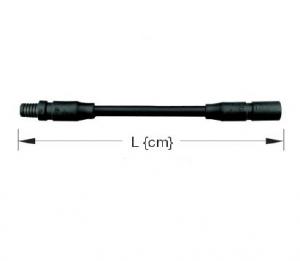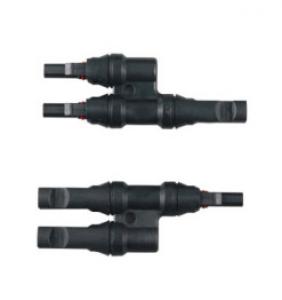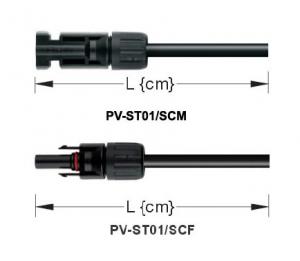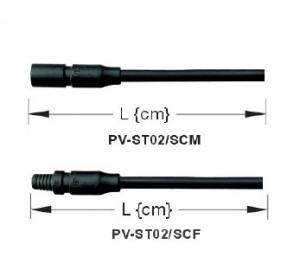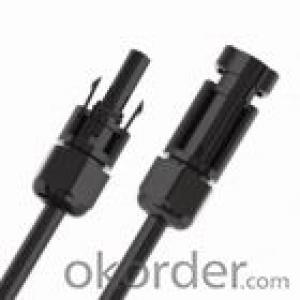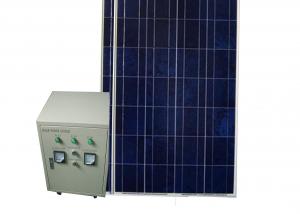Adithya Solar Energy Systems Solar Cable Connector ST01 SC
- Loading Port:
- China Main Port
- Payment Terms:
- TT OR LC
- Min Order Qty:
- -
- Supply Capability:
- 10000 set/month
OKorder Service Pledge
OKorder Financial Service
You Might Also Like
Solar Cable-Connectors,Due to highly robustness,UV-resistance,the touch protection a high grade connection is guaranteed for many years
Rated voltage 1000 V
Rated current 20A
Dia.of pin or socket 3mm
Protection degree(mated,junction box closed/unmated) IP67/IP2X
Operating temperature -40 °c to +85 °c
Contact material Copper,silver plated
Cable cross on request: 2.5mm2 4mm2
- Q: Can solar energy systems be installed on historic buildings?
- Yes, solar energy systems can be installed on historic buildings. However, it is essential to consider the architectural integrity and preservation of the building. The installation should be done in a way that minimizes any damage or alteration to the historic structure. Innovative mounting techniques and design considerations can be employed to seamlessly integrate solar panels into the building's aesthetics while harnessing clean energy. Additionally, obtaining any necessary permits or approvals from local authorities may be required to ensure compliance with preservation guidelines.
- Q: Can solar energy systems be used in areas with limited access to solar energy installation services?
- Yes, solar energy systems can still be used in areas with limited access to solar energy installation services. In such cases, individuals or communities can opt for DIY solar panel installations or seek assistance from local technicians who have basic knowledge and skills in solar energy systems. Additionally, advancements in technology have made solar panels more accessible and affordable, allowing for easier installation and maintenance, even in remote areas.
- Q: How do solar energy systems impact energy storage technologies?
- Solar energy systems have a significant impact on energy storage technologies by increasing the demand for efficient and scalable storage solutions. As solar power generation depends on sunlight availability, energy storage technologies help bridge the gap between peak solar production and peak energy demand, enabling a more reliable and flexible energy supply. This has spurred advancements in battery technology, grid-scale storage, and innovative storage solutions, ultimately driving the growth and integration of renewable energy sources into the grid.
- Q: Can solar energy systems be used for powering schools?
- Yes, solar energy systems can be effectively used for powering schools. Solar panels can be installed on school rooftops or in nearby open spaces to capture sunlight and convert it into electricity. This renewable energy source helps schools reduce their carbon footprint, lower energy costs, and provide a clean and sustainable power supply for various activities within the school premises. Additionally, solar energy systems can also serve as an educational tool, allowing students to learn about solar technology and the importance of renewable energy in addressing climate change.
- Q: Can solar energy systems be used for industrial applications?
- Yes, solar energy systems can be used for industrial applications. Solar power can be harnessed to generate electricity and provide heat for a wide range of industrial activities such as manufacturing, heating, cooling, and powering machinery. By utilizing solar energy, industries can reduce their dependence on traditional fossil fuels, lower operational costs, and contribute to a more sustainable and environmentally friendly future.
- Q: Can a solar energy system be installed on a historic building?
- Yes, a solar energy system can be installed on a historic building. However, it may require careful planning and consideration to ensure that the installation does not compromise the historical integrity or aesthetics of the building. It is important to work with experts in historic preservation and solar energy to find the most suitable design and implementation for the specific building.
- Q: What is the impact of roof pitch on the performance of solar panels?
- The roof pitch, or the angle at which a roof is sloped, has a significant impact on the performance of solar panels. The ideal roof pitch for solar panels depends on various factors, including the geographical location and the desired energy output. One of the primary impacts of roof pitch on solar panel performance is the amount of sunlight that panels receive. The angle of the roof determines how directly sunlight hits the panels. In general, a steeper roof pitch allows for better solar panel performance as it maximizes the sun exposure throughout the day. This is particularly important in areas with lower solar irradiance or during seasons with shorter daylight hours. Another important consideration is the self-cleaning effect of roof pitch. A steeper roof angle facilitates the natural cleaning of solar panels by rainwater, reducing the accumulation of dust, dirt, and debris. This helps maintain the efficiency of the panels over time, as a cleaner surface allows for better light absorption. Furthermore, the roof pitch affects the efficiency of snow shedding. In regions with heavy snowfall, a steeper roof pitch allows snow to slide off more easily, preventing snow accumulation on the panels and ensuring their functionality during winter months. However, it is worth noting that the impact of roof pitch on solar panel performance is not linear. While a steeper roof pitch may offer advantages, there is an optimal angle that maximizes energy production based on the specific latitude of the installation site. This is typically calculated by considering factors such as the sun's angle of incidence and the time of year. In conclusion, the roof pitch plays a crucial role in the performance of solar panels by influencing the amount of sunlight received, facilitating self-cleaning, and aiding snow shedding. Selecting the appropriate roof pitch based on geographic location and energy goals is essential to optimize the efficiency and effectiveness of solar panel installations.
- Q: Can solar energy systems be used in all locations?
- Solar energy systems can be used in most locations, but their efficiency and effectiveness can vary depending on the local climate and geographic conditions. In general, solar panels require sunlight to generate electricity, so they work best in areas with abundant sunshine and minimal shading. However, advancements in solar technology have significantly improved their efficiency, enabling solar energy systems to be utilized in a wider range of locations. In regions with high levels of solar radiation, such as deserts or tropical areas, solar panels can generate a substantial amount of energy throughout the year. These areas are ideal for solar energy systems as they receive more sunlight, resulting in higher energy production and a shorter payback period for the initial investment. On the other hand, locations with frequent cloud cover or long periods of darkness, such as certain northern regions or areas with dense tree canopies, may experience reduced solar energy production. However, this does not mean that solar energy systems cannot be used in these locations. In fact, solar panels can still generate electricity during cloudy days, albeit at a lower efficiency. Additionally, innovative technologies like concentrated solar power (CSP) or solar tracking systems can improve energy production in areas with less sunshine. Moreover, solar energy systems can be adapted to different geographical conditions. For instance, in areas where space is limited, rooftop solar panels can be installed on buildings. In locations with large open spaces, ground-mounted solar panels or solar farms can be deployed. Furthermore, floating solar panels can be installed on bodies of water, making use of previously unused spaces like reservoirs or lakes. It is important to note that while solar energy systems can be used in most locations, their suitability and economic viability should be assessed on a case-by-case basis. Factors such as local solar resources, electricity demand, installation costs, and government incentives or policies should be considered to determine the feasibility of implementing solar energy systems in a specific location.
- Q: Are there any tax benefits for installing a solar energy system?
- Yes, there are several tax benefits for installing a solar energy system. One of the main benefits is the federal investment tax credit (ITC). The ITC allows homeowners and businesses to deduct a percentage of the cost of their solar energy system from their federal taxes. As of 2021, the ITC provides a 26% tax credit for residential systems and commercial systems. Additionally, some states offer their own tax incentives for solar energy installations. These incentives may include property tax exemptions, sales tax exemptions, or state tax credits. The availability and amount of these incentives vary from state to state, so it is important to research the specific incentives available in your area. Furthermore, installing a solar energy system can also increase the value of your property. Several studies have shown that homes with solar panels sell for a premium compared to homes without them. This increase in property value can have long-term financial benefits. It is recommended to consult with a tax professional or an expert in solar energy to fully understand and take advantage of all the tax benefits available for installing a solar energy system.
- Q: Can solar energy systems be used in powering car charging stations?
- Yes, solar energy systems can definitely be used to power car charging stations. In fact, many car charging stations around the world are already powered by solar energy. Solar panels can be installed on the roof or nearby the charging station, which then captures sunlight and converts it into electricity. This renewable energy can be used to charge electric vehicles (EVs) without relying on the traditional power grid. Solar-powered car charging stations offer several advantages. Firstly, they provide a sustainable and clean source of energy, reducing carbon emissions and the overall environmental impact of EVs. Secondly, they can be installed in remote or off-grid locations where it may be challenging or expensive to connect to the electrical grid. This makes solar-powered charging stations particularly beneficial for rural areas or highways that lack easy access to electricity. Furthermore, solar energy systems can be designed to include battery storage, allowing the excess energy generated during the day to be stored and used during the night or during times of high demand. This ensures a continuous and reliable source of power for car charging stations, even when sunlight is not available. Although the initial installation cost of solar energy systems may be higher compared to traditional power sources, they generally have lower operating and maintenance costs in the long run. Additionally, there are various government incentives and rebates available to promote the use of renewable energy, which can help offset these initial costs. Overall, solar energy systems are a viable and sustainable solution for powering car charging stations, offering environmental benefits, energy independence, and cost savings in the long term.
Send your message to us
Adithya Solar Energy Systems Solar Cable Connector ST01 SC
- Loading Port:
- China Main Port
- Payment Terms:
- TT OR LC
- Min Order Qty:
- -
- Supply Capability:
- 10000 set/month
OKorder Service Pledge
OKorder Financial Service
Similar products
Hot products
Hot Searches
Related keywords
